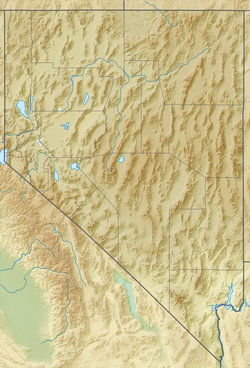| Lodi Hills | |
|---|---|
| Highest point | |
| Elevation | 1,974 m (6,476 ft) |
| Geography | |
| Country | United States |
| State | Nevada |
| District | Nye County |
| Range coordinates | 38°59′52.731″N117°54′48.417″W / 38.99798083°N 117.91344917°W |
| Topo map | USGS Downeyville |
The Lodi Hills are a mountain range in northwest Nye County, Nevada. [1] The range lies just west of the north end of the Paradise Range and Nevada State Route 361 passes the west side of the range. [1]
